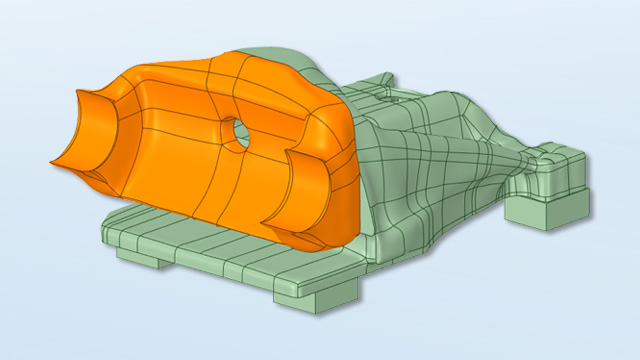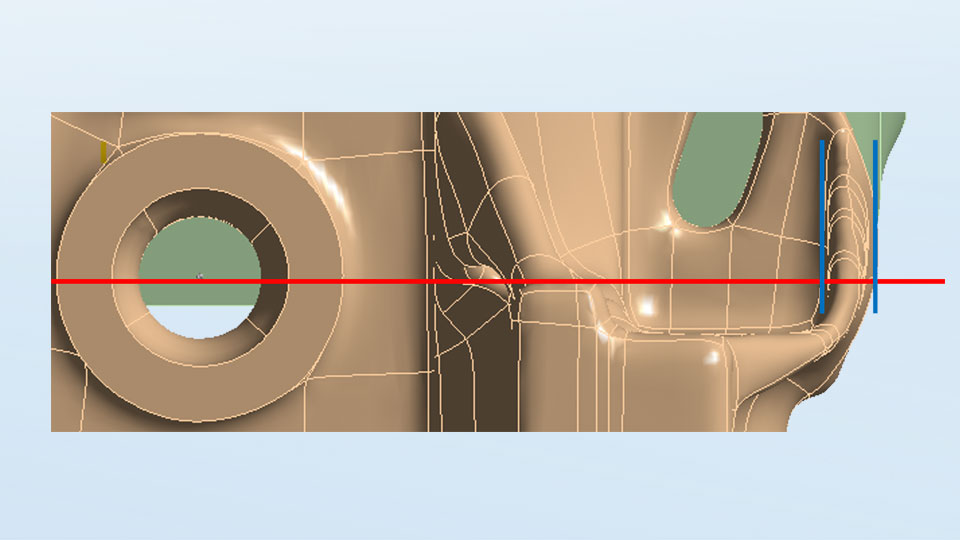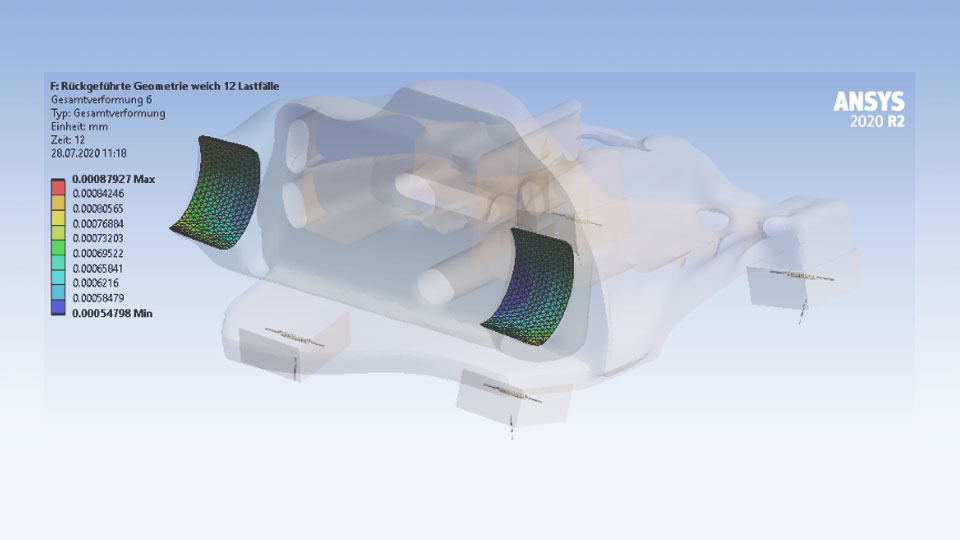Topology optimisation leads to an increased stiffness and mass reduction
Sector: Engineering firm/development service providerSpecialist field: Structural mechanicsThe enormous gains in stiffness as well as mass reduction offer clear advantages over classical design methods.
Summary
Task
Topology optimisation automatically determines the optimal material distribution in a predefined design space. This is demonstrated by using an existing centreless grinding machine as an example to show the possibility for improvement in classically designed cast structures. The requirement was to reduce the mass by one third compared to the existing construction.
Solution
In both components the mass could be reduced by about one third compared to the classically designed carriages. Nevertheless, stiffness increased between 82 and 680% (measured at the bearing shells), depending on the load case.
Customer benefits
By limiting the optimisation to observe the relevant manufacturing restrictions, castable structures can be produced whose molding box can be manufactured on a CNC milling machine, for example. The enormous gains in stiffness as well as mass reduction offer clear advantages over classical design methods.
Project Details
Task
Topology optimisation automatically determines the optimal material distribution in a predefined design space. This creates a great potential for stiffness increase and mass reduction, not only for additive manufacturing, but also for castings.
This is demonstrated by using an existing centreless grinding machine as an example to show the possibility for improvement in classically designed cast structures. For this purpose, two interconnected carriages were selected from the overall machine and optimized as a unit.
The requirement was to reduce the mass by one third compared to the existing construction. At the same time, castability was to be guaranteed by ensuring mold separation, with a wall thickness of at least 40 mm. The optimisation was set up to target maximum stiffness based on twelve real load cases, as well as to increase the first natural frequency by at least 20%.

Customer Benefit
Topology optimisation opens up new potential for improvement in the design of cast parts. By limiting the optimisation to observe the relevant manufacturing restrictions, castable structures can be produced whose molding box can be manufactured on a CNC milling machine, for example. The enormous gains in stiffness as well as mass reduction offer clear advantages over classical design methods.
For the machine in this example the following advantages arise:
Mass savings
- material savings → smaller drive for the carriages
- Cost reduction
Rigidity increase
- smaller deformations during the process
- better dynamic behavior
- greater process speed
- Technical improvements
Other factors
- modern optimisation methods
- energy-efficient design
- Marketing/Company Image

Solution
Topology optimisation resulted in the familiar organic structures in the individual carriages. However, the separating planes and minimum wall thicknesses relevant to casting are clearly visible.
In both components the mass could be reduced by about one third compared to the classically designed carriages. Nevertheless, stiffness increased between 82 and 680% (measured at the bearing shells), depending on the load case. The first natural frequency could also be increased by 50 percent from 138 Hz on the original carriage to 209 Hz, which is due to the combination of stiffness increase and mass reduction.

Images: © Ingenieurbüro Bratschi




